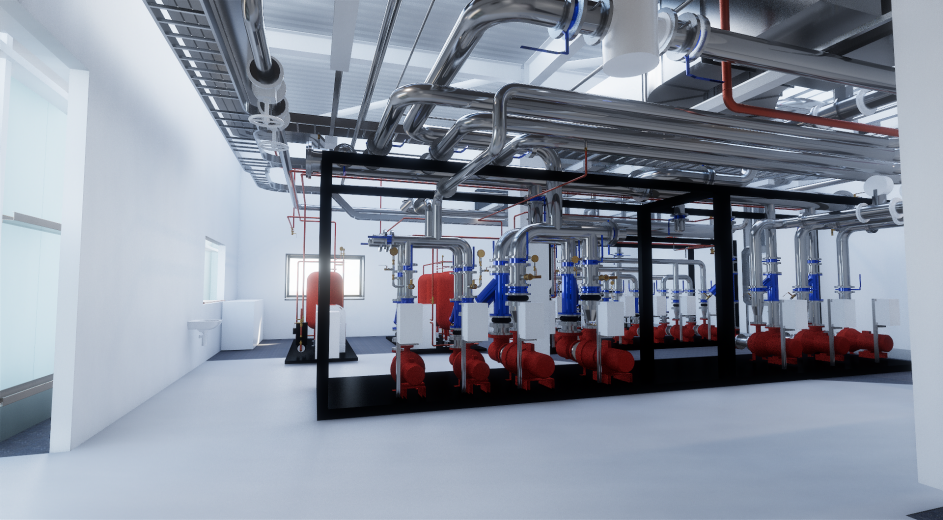Paul Newby, engineering services director at SES Engineering Services (SES) evaluates the successes and failures of the BIM Level 2 mandate and where the industry needs to go in the future
The government’s mandate for the BIM Level 2 accreditation was initially regarded as a major step forward for firms wishing to supply public sector works when it came into effect back in April 2016. It was intended to promote BIM to create cost & efficiency savings, programme certainty and greater collaboration; establishing strong principles for future projects.
The previous BIM Level 1 standard was intended to create the foundations of a solid digital strategy, but these are now widely considered by the industry to have been too simple, surpassed by the complexities of projects and offering limited industry advancement. BIM Level 2 offered a significant improvement by encouraging collaborative working between each stakeholder and ensuring each single discipline model was combined to create a federated BIM model.
Businesses had the opportunity to apply to become Level 2 accredited, providing a seal of approval and giving clients comfort when selecting experts to undertake their projects.
Regrettably, three years on from BIM Level 2’s introduction, there is limited evidence of real progress and value creation although undoubtedly inroads have been made. It is now opportune to reflect on successes, failures and where the industry needs to go in the future.
Output efficiency
BIM Level 2’s biggest success to date has mostly been around clash detection. Undoubtedly, knowledge of the opportunity that BIM and digital engineering presents has progressed, but has it plateaued?
Offsite manufacturing has thrived via digital technology and BIM allowing efficient design and production of prefabricated solutions – which improve the productivity, safety and quality of projects. Technology offers ever more exciting opportunities in this space.
There is, of course, flexibility around BIM Level 2 so that projects can have their own bespoke strategy to suit the objectives and desired outcomes. Employer’s Information Requirements (EIRs) – information required by the employer from both their own internal team and from suppliers – and BIM Execution Plans (BEPs) – detailing the project deliverables stipulated by the contract – are essential tools for setting out these strategies but can be overly ambitious and/or complex.
It is vital that the digital and engineering work is allocated to and undertaken by experts; as an example, co-ordinated working drawings/models should be undertaken by MEP Contractors to create optimum value and efficiency.
Still more to achieve
Despite the successes, it might be argued that collaboration, integrated working and meaningful use of data are still in their infancy, with only 3D modelling & clash detection being well established. Sharing of models & data through the project lifecycle is not where it needs to be and offers a great opportunity for everyone – not least clients.
There have also been issues with adoption and uptake through the supply chain due to the investment time and costs of digital transformation.
Current procurement trends aren’t always commensurate with early engagement, with contractor input and collaboration only happening after the digital strategy has been agreed. This is a critical loss of supply chain value – but a definite future opportunity.
A skills shortage of industry capacity and knowledge is also a significant factor. Digital transformation is not simply about software warriors; engineering understanding & experience are critical success factors with the technology creating the efficiency and ability to collaborate.
A greater emphasis should be made on closing the skills gap through training and development.
Culture is key
Until we have an industry that fully understands and believes in digital transformation and collaborative working, the full benefits of BIM Level 2 won’t be realised.
At SES – despite delivering complex BIM projects linked to our business enterprise system, offsite manufacturing facility and delivery processes for over ten years – at times this has been challenging.
Embedding a positive culture within the industry of collaborative and integrated working is paramount to embracing the positive change that digital construction can bring.
We’ve seen success on this with one of our customers, a major pharmaceutical giant, where SES is currently supporting the delivery of a £94m expansion to its world-class facility in County Durham.
As part of the design, we developed an extremely complex and fully populated digitally engineered data model of the MEP services contained within the facility. This was essential as we utilised offsite manufacturing to prefabricate the majority of the MEP installation. Using actual content and components in a collaborative environment maximised safety & quality and minimised site changes during installation. Most importantly, the use of virtual reality (VR) and augmented reality (AR) allowed the client to fully review and approve the MEP services during the early design stages.
What next?
The construction industry must radically transform! Moving away from an adversarial culture where transactional procurement is essential. This has been a longstanding challenge, but perhaps digital transformation will introduce new thinking and different behaviours and attitudes in the medium to long term.
Despite many firms still getting to grips with the basics of BIM Level 2, delivering BIM Level 3 is already being discussed. In our view, a more realistic approach needs to be taken. Without wishing to stifle ambition, until the industry has a solid BIM Level 2 foundation, looking so far ahead is largely pointless, as many companies will be left continually chasing their digital tail.
Once the entire industry embraces a holistic view, only then may we begin to realise the true potential of not only BIM Level 2, but digital engineering and construction as a whole.
Engineering services director
Twitter: @engineering_ses
LinkedIn: SES Engineering Services















